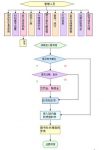
RFID Management Plan of Hebei Shengkun Library
[ad_1]
I. Overview
The library needs to upgrade the software and hardware of the library management system. By adopting advanced RFID (radio frequency card) technology and equipment, it can effectively improve the efficiency of library management, simplify the process of library management, and reduce the labor intensity of library management personnel. . The library RFID automatic management system can be operated as an independent library management system, or it can be connected to the campus network of the college to realize the information sharing and borrowing service of the library on the campus network. It is a powerful reflection of the modern and intelligent library management. It is an inevitable choice for the modernization of school teaching methods.
The system is based on RFID technology and uses RFID middleware as the medium to realize the organic combination of advanced RFID technology and book management methods, which provides a very effective technical means for library management, and integrates advanced RFID technology with the book management system. Combined, it effectively improves the efficiency of book management, simplifies the process of book management, reduces the labor intensity of library managers, and provides readers with more convenient and efficient services such as borrowing, returning, and querying books. Double (database and book tag chip) recording of information and borrowed books, and realizes the unification of EAS and the process of recording borrowing information.

2. Basic functions of the system
Build a network operating environment for the library’s RFID intelligent collection management system and deploy corresponding RFID hardware equipment. It is used to identify, track, and protect all the materials in the library, and realize the functions of book borrowing and returning, ordering, searching, and inventory counting through the RFID system. The goal is to greatly improve the efficiency of library materials processing.
Three, system introduction
1. System composition and advantages
The system module includes reader self-borrowing system librarian, workstation reader, portable collection checker, intelligent circulation label conversion connection workstation, reader self-return system, intelligent security monitoring system, application server and campus borrowing information reminder. The entire library RFID intelligent collection system application software includes: intelligent circulation label initialization conversion system, administrator workstation application function integration system, reader self-borrowing system, reader self-service book return system, handheld device query, shelf and inventory system, and security access door system.
Higher and more advanced management mode. The reasonable allocation of human resources, the conversion of low-level services to high-level services, simplifying manual operations, saving time and cost. Accurate and easy management of collections. More civilized and more humane services; more personalized customized services; book return services anytime, anywhere are also a manifestation of improved service quality.
Fourth, the subsystem
1. Radio Frequency (RFID) Book Tag
The development of RFID technology allows very thin chips to be embedded in adhesive labels, which can be easily fixed on books. This development, in conjunction with library information systems, provides a very good way to create a digital and automated library. Chance. 13.56MHZ system features: high-quality and large-capacity chip data storage space can store the information of each book in it. These data can be read and read within the range of 0.05 meters to 1.2 meters without sight or direct contact. Write; RFID tags are stable and reliable; can be used for more than 10 years, temperature, light, and will not affect the use, even if the tag is dirty and the surface is worn, it will not affect the use. Information that the label can write: book identity (ID number); book information (book title, call number, etc.); belonging library identity; belonging bookshelf information; borrower information; borrowing date; more other content.
2. Intelligent security detection system
Function description: Detect whether there are missing books brought out; with sound and light prompt alarm function.
3. Reminder system for borrowing information
Function description: Query the information of book borrowing time; the equipment can work independently; it can be deployed everywhere in the campus.
4. Portable Collection Check System
Function description: Supports fast search and shelf functions of books; supports fast data collection of inventory business; has data backup and recovery functions, and can work offline.
5. Label conversion system
Function description: Barcode information scanning and RFID tag information writing are automatically completed at the same time; the design of the wireless mobile mode enables the label conversion task to be completed in front of each bookshelf; supports optional label data encryption.
6. Librarian Workstation
Function description: real-time monitoring and management of online equipment; providing readers with more and better value-added services; auxiliary business processing; providing compatible barcode processing functions.
7. Self-service book return system
Function description: Readers can return the book independently; it can be deployed throughout the campus, and it is convenient to return the book; it is possible to provide a 7×24-hour book return service; the humanized error reminder; the book return receipt can be printed.
[ad_2]



